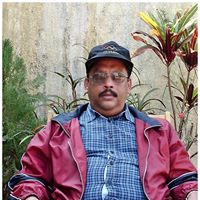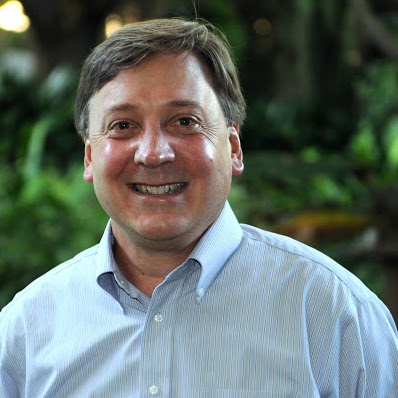Victor S Nelson
age ~82
from Southern Pines, NC
- Also known as:
-
- Vic S Nelson
- N Nelson
Victor Nelson Phones & Addresses
- Southern Pines, NC
- Fayetteville, NC
- 45 Anchorage Dr, Milford, CT 06460 • (203)2534294
- Alexandria, VA
Work
-
Company:Victor E Nelson MD
-
Address:1328 Southern Ave Se Suite 306, Washington, DC 20032
-
Phones:(202)5631100
Education
-
School / High School:Howard University College Of Medicine1977
Languages
English
Awards
Healthgrades Honor Roll
Ranks
-
Certificate:Obstetrics & Gynecology, 1984
Specialities
Obstetrics & Gynecology
Isbn (Books And Publications)



Medicine Doctors

Dr. Victor E Nelson, Washington DC - MD (Doctor of Medicine)
view sourceSpecialties:
Obstetrics & Gynecology
Address:
Victor E Nelson MD
1328 Southern Ave Se Suite 306, Washington, DC 20032
(202)5631100 (Phone)
1328 Southern Ave Se Suite 306, Washington, DC 20032
(202)5631100 (Phone)
Certifications:
Obstetrics & Gynecology, 1984
Awards:
Healthgrades Honor Roll
Languages:
English
Hospitals:
Victor E Nelson MD
1328 Southern Ave Se Suite 306, Washington, DC 20032
Howard University Hospital
2041 Georgia Avenue North West, Washington, DC 20060
1328 Southern Ave Se Suite 306, Washington, DC 20032
Howard University Hospital
2041 Georgia Avenue North West, Washington, DC 20060
Education:
Medical School
Howard University College Of Medicine
Graduated: 1977
Medical School
Howard University Hospital
Graduated: 1977
Howard University College Of Medicine
Graduated: 1977
Medical School
Howard University Hospital
Graduated: 1977

Victor Nelson, Washington DC
Work:
Medical Service Center LLC
1328 Southern Ave SE, Washington, DC 20032
1328 Southern Ave SE, Washington, DC 20032

Victor Erastus Nelson, Washington DC
view sourceSpecialties:
OB-GYN
Address:
1328 Southern Ave Se, Washington, DC 20032
Education:
Howard University, College of Medicine - Doctor of Medicine
Board certifications:
American Board of Obstetrics and Gynecology Certification in Obstetrics & Gynecology
Us Patents
-
Multi-Position Actuator Or Sector Motor
view source -
US Patent:6518685, Feb 11, 2003
-
Filed:Jan 12, 2001
-
Appl. No.:09/759052
-
Inventors:Victor Nelson - East Northport NY 11731
-
International Classification:A41F 1900
-
US Classification:310191, 310 37, 310103, 31015601
-
Abstract:A multi-position actuator with three electromagnetic poles where the airgap of selected pole(s) is made different from the remaining pole(s). The multi-position actuator comprises a housing, an armature rotatably mounted in the housing, and three poles journaled around the armature. There is also a stop arm attached to the armature which stops the rotation of the armature when the stop arm hits an adjacent stop. These stops are positioned within the housing to limit the rotation of the armature. This multi-position actuator is designed to form either a fail safe actuator or a latching actuator by adjusting the spacing of the air gap between the poles and the armature. When used with continuous rotation without the stop mechanism, the air gap(s) of the pole(s) can be adjusted in a repetitive manner to produce a useful magnetic torque.
-
Ratchet And Ball Magnetic Index Device
view source -
US Patent:59695889, Oct 19, 1999
-
Filed:Sep 15, 1998
-
Appl. No.:9/153195
-
Inventors:Victor H Nelson - East Northport NY
-
International Classification:H01F 700
-
US Classification:335229
-
Abstract:A ratchet and ball magnetic index device having a drive motor plate with a top surface and a bottom surface. The drive motor plate contains at least one ball receiving recess on the periphery of the bottom surface of the drive motor plate. A permanent magnet armature is secured to the top surface of the drive motor plate and rotates freely around a rotor shaft. A sector motor rotates the armature and drive plate when turned on. A ratchet plate, attached to the rotor shaft, has a bottom surface and a top surface with a plurality of contours displaced in a circular direction around the circumference of the ratchet plate. Each of the contours has a flat plane connected to an incline plane which is connected to a vertical plane. At least one magnetically attractable drive ball is positioned between the top surface of the ratchet plate and the bottom surface of the drive motor plate, wherein the drive ball moves freely within the ball receiving recess. A plurality of permanent magnets are positioned between the top surface and the bottom surface of the ratchet plate and located beneath each of the flat planes.
-
Transfer Device For Combining And Switching Microwave Signal Using A Rotary Waveguide Switching Structure
view source -
US Patent:52066100, Apr 27, 1993
-
Filed:Jun 3, 1991
-
Appl. No.:7/709311
-
Inventors:Victor Nelson - East Northport NY
-
International Classification:H01P 110
-
US Classification:333106
-
Abstract:A transfer device for selectively combining and switching microwave signals between selective ports in a housing in which is a cylindrical rotor. In a lower portion of the rotor is a first passage having three arms each of which terminates at one of the ports when the rotor is one position so that microwave signals entering the passage via two of the arms are combined and leave the rotor and housing via the third arm. In an upper portion of the rotor are second and third passages which are blocked when the rotor is in the first position to prevent switching of signals therein When the rotor is in the second and third positions the second and third passages pass microwave signals between selected pairs of ports, while the arms of the first passage are blocked to prevent combining of signals therein.
-
Transfer Device For Combining, Dividing, And Switching Microwave Signals
view source -
US Patent:48916137, Jan 2, 1990
-
Filed:Jan 9, 1989
-
Appl. No.:7/294829
-
Inventors:Victor Nelson - East Northport NY
-
International Classification:H01P 112
-
US Classification:333108
-
Abstract:This microwave transfer device is a hollow body having an internal cavity and lateral input and output openings communicating with the cavity. A post in the cavity divides it into passages extending between input and output openings for passing microwave signals therebetween. Axially reciprocatable shorting pins are supported on the body and are selectively insertable in the passages to close off the passages, and retractable from the passages to open the same. By proper selective insertion and retraction of the pins, microwave signals applied at the input openings can be combined, divided, or switched, respectively, to the output openings.
-
Magnetic Switch For Coaxial Transmission Lines
view source -
US Patent:56420862, Jun 24, 1997
-
Filed:Aug 28, 1995
-
Appl. No.:8/519691
-
Inventors:Victor H. Nelson - East Northport NY
-
International Classification:H01H 5300
-
US Classification:335 4
-
Abstract:A switch includes switching elements which are mounted within a sealed radio frequency cavity. The switching elements provide electrical contact paths between contact portions of connectors which project into the cavity. The switching elements are urged against the contacts by magnetic forces. During operation, unselected paths have their switching elements grounded out by the action of external magnets which attract the unselected switching elements to a ground plate with a magnetic force which overcomes the magnetic forces urging the switching elements against the contacts.
-
Magnetic Switch For Coaxial Transmission Lines
view source -
US Patent:49655426, Oct 23, 1990
-
Filed:Feb 28, 1989
-
Appl. No.:7/316659
-
Inventors:Victor Nelson - East Northport NY
-
International Classification:H01H 5300
-
US Classification:335 5
-
Abstract:This invention concerns a magnetic switch assembly used for switching input and output signals between coaxial transmission lines connected to a body having a closed cavity in which terminals of the lines are exposed. One or more conductive contact members, which are the only moving parts in the cavity, bridge one or more pairs of line terminals in closed circuit portion. The contact members are moved magnetically from open to closed position, and are latched or held failsafe by stationary permanent magnets or pulsed electromagnets. The contact members are moved to open position by pulsed electromagnets or rotatable permanent magnets. The contact members comprise magnetized strips, magnetic strips, or nonmagnetic strips carrying magnets or magnetic members. The assembly can be arranged for single or multiple pole, single or multiple throw switching.
Name / Title
Company / Classification
Phones & Addresses
Visiting Assistant Professor Mathematics Department
Whittier College, A Corporation
Religious Organizations
Religious Organizations
13406 Philadelphia St, Manassas, VA 20110
Chief Of Obsterics and Gynocology, Executive Officer
Not-for-Profit Hospital Corp
General Hospital
General Hospital
1310 Southern Ave SE, Washington, DC 20032
(202)5746000
(202)5746000
Owner, Medical Doctor
Victor E Nelson MD
Medical Doctor's Office · Internist
Medical Doctor's Office · Internist
1328 Southern Ave SE, Washington, DC 20032
(202)5631100, (202)5744666
(202)5631100, (202)5744666
Victor Nelson MD
Obgyn
Obgyn
1328 Southern Ave SE, Washington, DC 20032
(202)5631100
(202)5631100
Principal
Victor S Nelson
Business Services at Non-Commercial Site
Business Services at Non-Commercial Site
230 Highland Rd, Southern Pines, NC 28387
305 Dawnwood Ct, Fayetteville, NC 28311
305 Dawnwood Ct, Fayetteville, NC 28311
President
Nelson Associates Inc
Engineering Consultant
Engineering Consultant
5514 Flag Run Dr, Springfield, VA 22151
(703)5694621
(703)5694621
Classmates

Victor Nelson
view sourceSchools:
Austin High School Knoxville TN 1959-1963
Community:
John Calloway, Gerald Burdine, W Taylor, Arlie Wilson, Jo Irwin

Victor Nelson
view sourceSchools:
Scotia-Glenville High School Scotia NY 1987-1991
Community:
Elsa Burns

Victor Nelson
view sourceSchools:
Detroit Country Day School Birmingham MI 1943-1950
Community:
Ron Angell

Victor Nelson
view sourceSchools:
Chugiak High School Chugiak AK 1970-1974
Community:
Frank Mielke, Danny Evans

Victor Nelson
view sourceSchools:
Malcolm X Shabazz High School Newark NJ 1968-1972
Community:
Venus Bernardo, Aretha Pugh, Sharome Gilbert, Rachel Jenkins, Kimberly Earles, Deborah Harden

Victor Nelson
view sourceSchools:
Sanders Valley High School Sanders AZ 1986-1990
Community:
Daniel Danny, Gidget Moore, Anna Allen, David Roberts

Victor Nelson
view sourceSchools:
West Carteret High School Morehead City NC 1974-1978
Community:
Bill Horn, Lydia Eubanks, Kim Ladnier, Yvonne Jimenez, Johnny Eubanks

Stacey Victor Nelson | Mc...
view sourceMyspace
Youtube
Flickr

Victor Onah Nelson
view source
Victor X Nelson
view source
Victor Moneymakin Nelson
view source
Victor Aruna Nelson
view source
Victor Walter Nelson
view source
Victor Nelson
view source
Victor Nelson
view source
Victor Nelson
view sourceNews

Lawyer: Soccer coach didn't know of duct-taping
view source- Last year's team captain, Victor Nelson, 18, also defended the coach. He told the (Tarentum) Valley News Dispatch (http://bit.ly/1shVKfu ) that the duct-taping is part of an annual ritual that occurs the same night underclassmen toilet paper the houses of senior players. That usually happens a few d
- Date: Oct 09, 2014
- Category: U.S.
- Source: Google
Googleplus

Victor Nelson
Work:
Kenneth A. Picerne Foundation - Executive Director (2005)

Victor Nelson
Work:
J.P. MORGAN CHASE & CO. - TEAM COACH (2011)

Victor Nelson

Victor Nelson

Victor Nelson

Victor Nelson

Victor Nelson

Victor Nelson
Get Report for Victor S Nelson from Southern Pines, NC, age ~82













